
Transformative
Aesthetics With
Exceptional
Results
Breast implantation is a surgical procedure aimed at improving the aesthetics and proportions of the breasts. It is a widely performed procedure, recommended in various contexts:
- Augmentation mammoplasty.
- Breast reconstruction.
- Replacement or correction of existing implants.
- Breast malignancy or untreated premalignancy;
- Active infection in any area of the body;
- Pregnancy or breastfeeding.


Mentor offers a variety of silicone gel breast implants, all with cohesive properties. These include:
- Gel Cohesiveness: ranging from Cohesive I (standard), Cohesive II (moderate), to Cohesive III (high).
- Variety of shapes and sizes: implants are available in various shapes, sizes, and with textured (Siltex) or smooth surfaces.
- Filling options: implants can be filled with cohesive silicone gel or have an outer silicone shell with saline filling.
- Durability. Breast implants are not considered long-term devices. They may require replacement or removal over time.
- Aesthetic effects. Postoperative changes to the breasts may be irreversible. Implant removal may result in unacceptable aesthetic outcomes.
- Impact on breastfeeding. Breast implants can influence breastfeeding capacity.
- Need for repeat interventions. Patients may require additional surgeries throughout their lives.

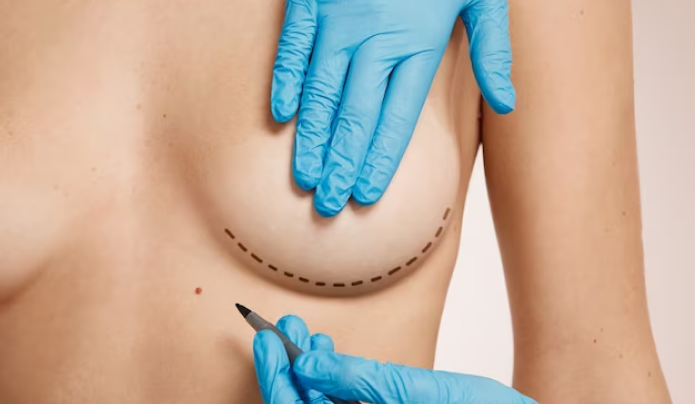
- Choosing the surgeon: it is essential to select a surgeon experienced in breast implants, discussing aspects such as complication frequency and types of re-interventions.
- Preoperative considerations: avoid blood-thinning medications, strict dieting, and sun exposure before surgery. Inform the surgeon about any existing medical conditions.
- Size and type of implant: implant size is chosen based on desired breast size and available tissue. Consideration will be given to surface texture, shape, and gel cohesion level.
- Implant location: implants can be placed under the pectoral muscle or under the breast gland, each option having advantages and disadvantages.
- Incision site: there are several options for the incision site, each with specific implications regarding scar visibility and potential influence on breastfeeding.
Blepharoplasty is an advanced surgical procedure focused on the aesthetics of the eyes, removing excess skin and fatty tissue from the eyelids. It helps correct aging-related issues such as droopy eyelids, tired appearance, and aesthetically unpleasing eyebrow position, restoring a rested and rejuvenated look.
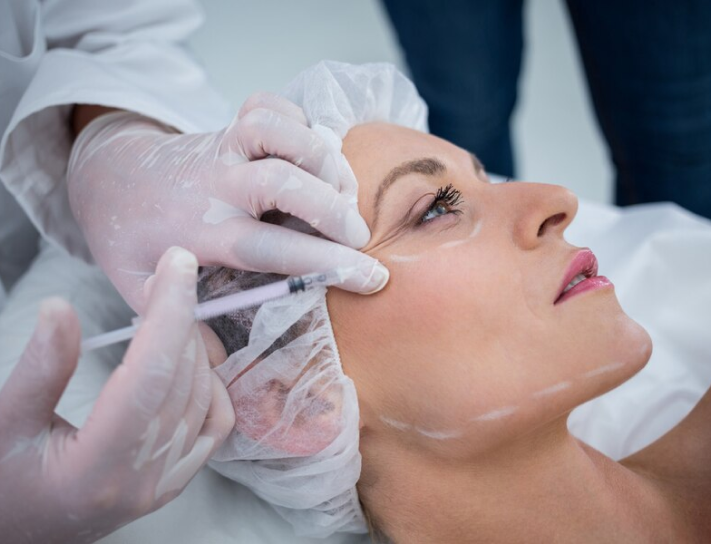
Preoperative Evaluation and Emotional State Importance

Blepharoplasty is tailored to individual needs, used for removing fat deposits in younger patients or correcting skin laxity and excess tissue in mature patients.
Surgical Technique and Incision Precision

Selection of incision locations is based on strict surgical criteria, and the procedure can be performed under local or general anesthesia. Incisions are strategically placed, following the natural lines of the eyelids to minimize scar visibility.
Recovery Period and Postoperative Care
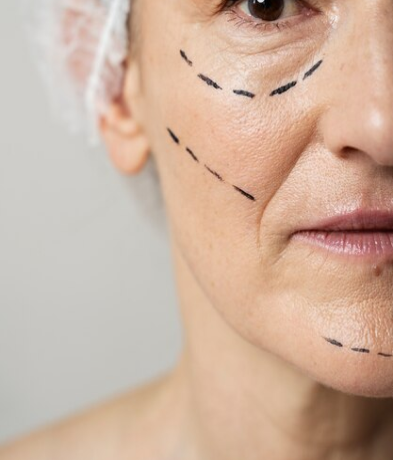
Maintaining an elevated head position and using cold compresses are recommended to reduce swelling and bruising. Eye drops are indicated in the early postoperative days. Suture removal is usually done at 5-7 days after surgery, at which point a significant improvement in the appearance of the eyelids is observed.


Facial rhytidectomy, commonly known as a facelift, is a rejuvenating surgical intervention that has become increasingly popular among both men and women in recent years. This procedure not only addresses skin laxity, wrinkles, and facial contouring but also tackles functional difficulties that may arise with aging. Men, in particular, report significant improvement in self-confidence post-intervention, due to correction of tired appearance and functional issues.
Potential Candidates for Surgery

This procedure can correct a weakened jawline and double chin appearance, as well as pronounced wrinkles around the neck, mouth, and eyes. Thus, facial lifting can provide a younger and more rested appearance, restoring the natural contours of the face and neck.
Facelift in Men: Specific Considerations

Increasing interest of men in facelift requires technical adjustments to account for male anatomical peculiarities, such as facial tissue density and scar management in the context of shorter facial hair.
Mini-Facelift

Mini-facelift is indicated for patients requiring less extensive interventions, focusing on the upper areas of the face such as the cheeks. This approach is particularly effective for younger patients, providing natural results with a shorter recovery period.


Rhinoplasty, also known as nose surgery, is a complex and refined procedure in the field of plastic surgery, with the main objective of reshaping and correcting the nasal structure to improve facial harmony and nasal functionality. This intervention addresses both aesthetic concerns and functional problems related to the nasal septum.
Potential Candidates for Surgery
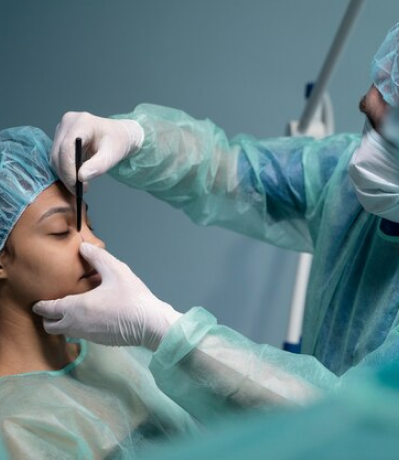
Rhinoplasty is indicated for patients seeking aesthetic improvements to the nose or requiring correction of structural anomalies affecting breathing.
Risks and Complications
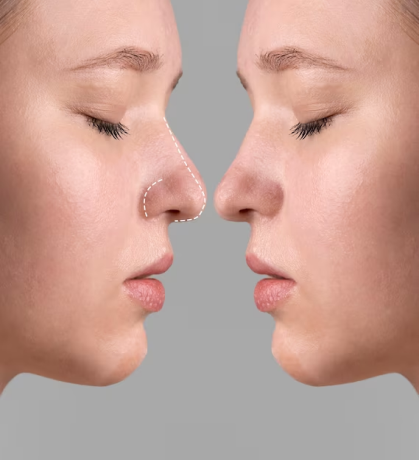
In the hands of an experienced surgeon, the risks associated with rhinoplasty are minimized, but like any surgical procedure, there is a possibility of complications.
Preoperative Preparation
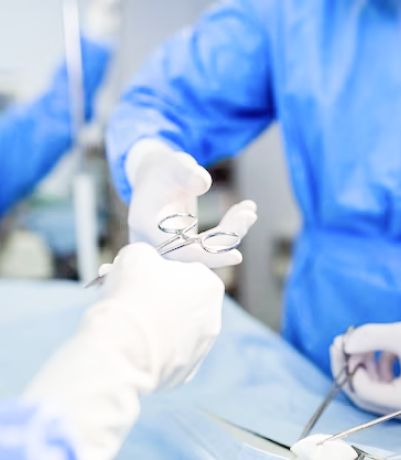
Preparation for rhinoplasty involves standard preoperative evaluations as well as detailed discussions about the patient’s aesthetic and functional goals. It is recommended to avoid medications that may increase the risk of bleeding, such as aspirin or nonsteroidal anti-inflammatory drugs.
Surgical Procedure

Rhinoplasty is performed under general anesthesia or local anesthesia with sedation, and the duration of the procedure varies from one hour to several hours, depending on the complexity of the case.
Postoperative Recovery

The immediate postoperative period may result in swelling, bruising, especially in the lower eye area, and varying degrees of discomfort. The use of cold compresses and maintaining an elevated head position can facilitate the reduction of swelling and bruising.
Conclusions

Rhinoplasty offers an opportunity to achieve improved facial balance, significantly contributing to the patient’s self-confidence. It is essential for patients to have realistic expectations and to discuss their goals and concerns in detail with their surgeon to ensure the most satisfying results possible.

Otoplasty, also known as ear correction surgery, is a surgical procedure aimed at redefining the aesthetics of the ears by bringing them closer to the head or reducing their size. Auricular asymmetry, whether due to differences in orientation or size, is a common issue, and the goal of the intervention is to achieve symmetry as close to natural as possible.
Potential Candidates for Surgery

Otoplasty is recommended after the age of 14-15 when auricular development approaches adult size. The intervention is beneficial for children on the verge of entering education to prevent potential psychological trauma caused by the unusual appearance of their ears.
Surgical Risks

Complications such as minor blood clots or incision site infections may occur but are manageable with appropriate treatment.
Preoperative Preparation

Patients are advised not to consume food or beverages after midnight before the surgery. It is important to avoid aspirin and other anticoagulant medications for at least two weeks before the procedure.
Surgical Procedure

Otoplasty takes about an hour and is performed under general or local anesthesia with sedation. The incision is made behind the ear, allowing access to the cartilage that will be reshaped to achieve the desired shape and positioning.
Postoperative Recovery

Children can return to normal activities after a week with careful monitoring in the first month, and adults – after 2-3 days post-surgery. It is essential to avoid strenuous physical activities in the first few weeks postoperatively to ensure proper healing.
Conclusions

Absolute symmetric perfection is rarely achieved in nature, so a slight difference between the two ears may remain. The main goal of otoplasty is to achieve a harmonious and proportionate appearance, enhancing the patient’s confidence and satisfaction with their own image.

Breast reduction is a surgical intervention aimed at addressing problems caused by excessively large breasts, which can range from neck and back pain, skin irritations, to breathing difficulties and postural problems. Additionally, large breasts can negatively impact self-esteem and create difficulties in finding appropriate bras and clothing.
Potential Candidates for Surgery

This procedure is aimed at women with sagging and disproportionately large breasts. It is essential that during the initial consultation, the patient openly discusses their expectations regarding breast size and shape and the appearance of postoperative scars with the surgeon.
Associated Risks

Any surgical intervention involves certain risks. Breast reduction, being a major operation, requires a detailed discussion of potential risks with the surgeon and anesthetist. Complications may include infections, hematoma formation, and unsightly scars.
Preoperative Preparation

Preparation for surgery includes performing a mammogram or breast ultrasound, abstaining from food and beverages after midnight before the operation, and avoiding aspirin and other anticoagulant medications for two weeks beforehand.
Surgical Procedure

Breast reduction is performed under general anesthesia and lasts between 2-3 hours. The most commonly used technique involves an anchor-shaped incision, which allows for the removal of excess skin and the repositioning of the nipple and areola.
Postoperative Recovery

The recovery period involves suture removal at approximately 12 days after the surgery and wearing a special bra for 2-3 months. Normal activities can be resumed within a week after the operation, but strenuous efforts should be avoided for a month.
Conclusions

Although breast reduction surgery can significantly improve quality of life, it is important to consider that the position and size of the breasts may change over time due to pregnancies, weight fluctuations, or the aging process.
Mastopexy, or breast lift, is an aesthetic surgical intervention designed to reshape and lift sagging breasts, while also offering the option to reduce the size of the areola. This procedure is the solution for women facing sagging breasts.

Potential Candidates for Surgery

Breast lift is ideal for women with breast ptosis (sagging breasts) who desire aesthetic improvement without necessarily altering the size. Physical exercises or medical treatments do not provide an effective solution for this problem.
Procedure Duration

The procedure can last between 1 and 3 hours, depending on the complexity of the case and the surgical techniques used.
Side Effects and Risks

Adverse reactions to anesthesia, temporary bruising, swelling, and some degree of discomfort may occur. Major complications are rare but may include infections or hematoma formation, which can affect the appearance of scars.
Recovery

Daily activities can be resumed after about a week, and strenuous exercises are allowed after a month. Scars may take up to a year to fade, and the use of a special cream can accelerate this process.
Results

The results of mastopexy can be long-lasting, although pregnancy, aging, or weight fluctuations may influence the appearance of the breasts over time. The use of breast implants in combination with the lift can enhance and prolong the results.
Surgical Technique

The anchor-shaped incision is commonly used, allowing for the removal of excess skin and repositioning of the nipple. Patients with small breasts and minor anomalies may opt for more discreet incisions, such as the Benelli technique, which involves removing a portion of skin in the shape of a doughnut.
Anesthesia

The procedure is performed under local or general anesthesia, depending on the patient’s preferences and the surgeon’s recommendations.
Postoperative Breastfeeding

Breastfeeding remains possible after breast lift, reduction, or augmentation surgeries. It is important for patients to discuss this aspect with the surgeon during the preoperative consultation to ensure that the procedure will not affect the mammary ducts.
Conclusions

Breast lift represents an effective solution for contour reshaping and breast firmness, significantly contributing to improved quality of life and self-confidence. Open discussion with the plastic surgeon is essential for setting expectations and choosing the most suitable surgical approach.

Abdominoplasty, also known as “abdominal contouring,” is a complex surgical procedure aimed at removing excess skin and fat from the lower abdomen and correcting the separation of the abdominal muscles. It is an effective option for individuals who have not been able to achieve a flatter and more toned abdomen through diet and exercise.
Potential Candidates for Surgery

Abdominoplasty is indicated for both men and women who have excess abdominal skin and fat that does not respond to conventional weight loss methods. Additionally, the procedure is effective in removing stretch marks and scars located below the navel.
Surgical Risks
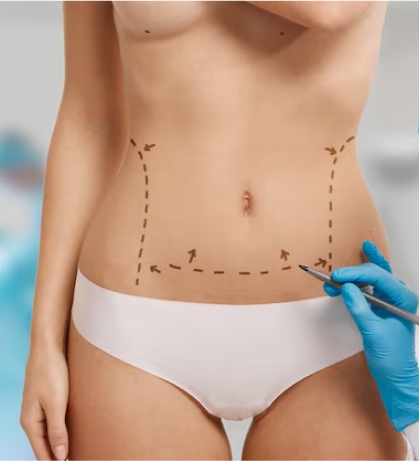
Like any major surgery, abdominoplasty involves certain risks, including adverse reactions to anesthesia, infections, hematoma or embolism formation, and the possibility of unsightly scars.
Preoperative Precautions
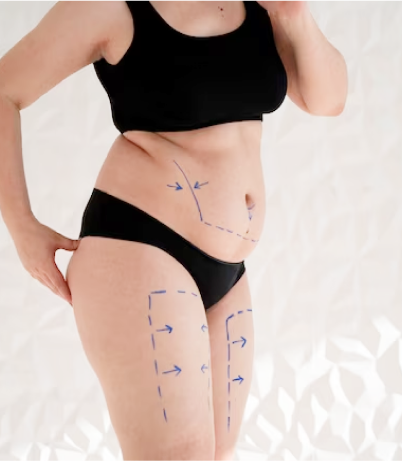
Patients need to follow a series of instructions, such as undergoing investigations like mammography/ultrasound, avoiding aspirin and other anticoagulant medications two weeks before surgery, and fasting after midnight before the procedure.
Surgical Procedure
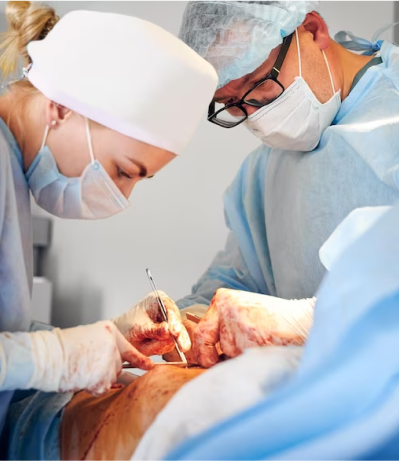
Abdominoplasty is performed under general anesthesia and takes between 2 and 5 hours. The typical procedure involves removing the skin and subumbilical fat tissue and may also include suturing of the abdominal muscles to improve abdominal contour.
Postoperative Recovery

The postoperative recovery period involves wearing an abdominal binder to support the abdominal area and reduce swelling. Sutures are usually removed 12 days post-surgery.
Conclusions

Abdominoplasty can provide significant results for individuals looking to improve the appearance of their abdomen. However, it is important for patients to have realistic expectations and be aware of the permanent scars resulting from this procedure.
Liposuction is an advanced surgical technique aimed at removing stubborn fat deposits from specific areas of the body, such as the abdomen, thighs, buttocks, and hips for women, and the abdominal area for men. This procedure is not a weight loss solution!
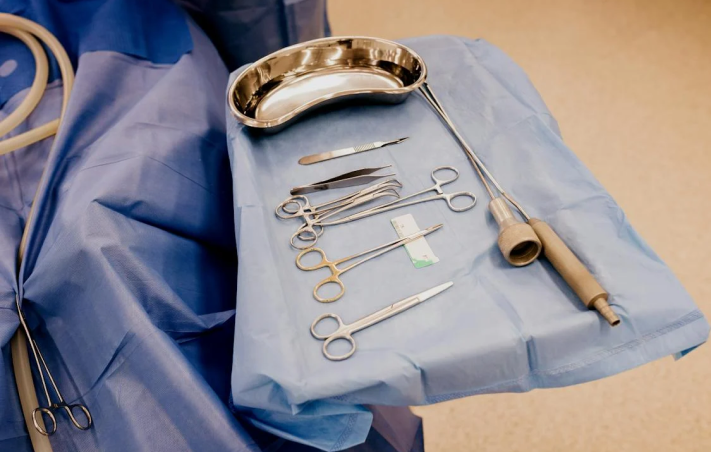
Potential Candidates for Surgery
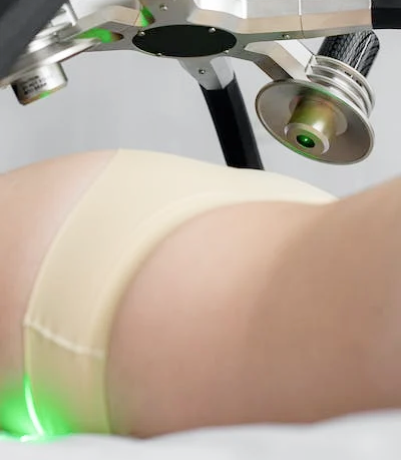
Liposuction is suitable for individuals close to their ideal weight, who have elastic skin and are in good physical condition. This intervention is not recommended for older individuals, where skin elasticity is reduced.
Associated Risks
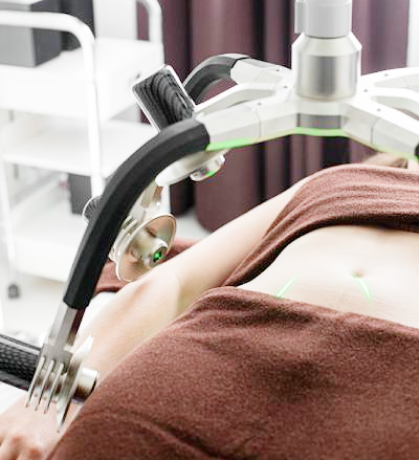
Any surgical procedure involves certain risks. Complications associated with liposuction are relatively rare, especially when the procedure is performed by an experienced surgeon in a well-equipped facility.
Preoperative Preparations

Patients need to follow specific instructions before the intervention, including avoiding food and hydration after midnight before the surgery, stopping the intake of aspirin and other anticoagulant medications two weeks before.
Surgical Procedure
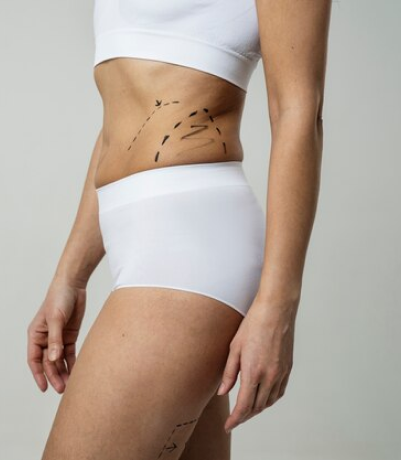
Liposuction can be performed under various forms of anesthesia, depending on the treated area and patient preferences. Modern techniques include the use of tumescent solutions, which contain anesthetic and adrenaline to minimize discomfort and bleeding.
Postoperative Recovery

The postoperative recovery period requires wearing special compression garments to support the healing process and optimize results. Swelling and bruising will diminish in the first few weeks, and the final result will be visible after approximately 3 months.
Conclusions
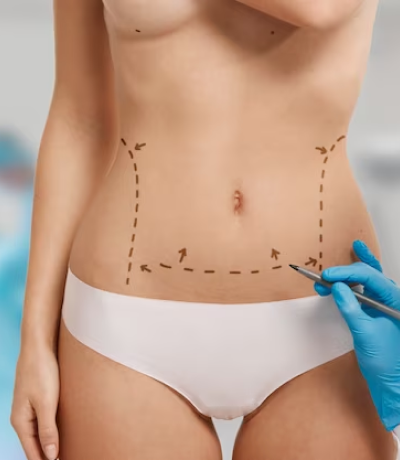
Liposuction is an effective solution for body contouring, addressing individuals who want to eliminate fat deposits resistant to diet and exercise.

Gynecomastia is the surgical procedure aimed at reducing enlarged breasts in men, a condition that can cause discomfort. This condition can result from hormonal imbalances, hereditary factors, obesity, or the use of certain substances. It can also occur at any age and may be associated with certain medical conditions, such as liver or thyroid gland disorders.
Potential Candidates for Surgery

The intervention is suitable for healthy men with stable weight who are non-smokers or drug users. It is important for the skin to have good elasticity to adapt to the new contours of the chest after the intervention.
Associated Risks

Any surgical procedure involves risks, but in the case of gynecomastia, complications are rare, especially when the intervention is performed by an experienced surgeon. A detailed discussion with the surgeon and anesthetist is essential to understand the specific risks.
Surgical Procedure

The traditional procedure involves an incision around the areola to allow for the excision of breast tissue and adjacent fat. In some cases, liposuction may be used to improve the chest contour.
Surgical Intervention

Gynecomastia is usually performed under general or local anesthesia with sedation. The duration of the intervention varies depending on the complexity of the case.
Postoperative Recovery

After the intervention, the patient needs to wear compression clothing to support the new contours of the chest and reduce swelling. Swelling and bruising will decrease in a few weeks, and the final results will be visible after a few months.
Conclusions

Gynecomastia offers an effective solution for men who want to address enlarged breasts. Preoperative discussion with the surgeon is crucial to establish expectations and understand the recovery process.
Jet Peel and Affinity treatments represent advanced solutions in the field of aesthetic dermatology, offering a wide range of benefits for skin care and revitalization. These procedures use state-of-the-art technologies to treat various skin issues, from skin aging to various dermatological conditions.


- Cleansing: removes impurities and dead cells from the skin’s surface.
- Hydration: intensely hydrates the skin, giving it a healthy and luminous appearance.
- Circulation stimulation: improves blood and lymphatic circulation, promoting cellular regeneration.
- Oxygenation: oxygenates the skin, contributing to its revitalization and toning.
Jet Peel is effective in treating acne, scars, wrinkles, and other skin problems, including cellulite and stretch marks.

- Gentle cleansing: removes impurities without affecting the skin’s upper layer.
- Pore tightening: helps reduce the size of enlarged pores.
- Increased elasticity: enhances skin elasticity, giving it a firm and toned appearance.
- Improvement of skin texture: smoothens the skin and reduces the appearance of hyperpigmentation.
- Hydration and sebum regulation: normalizes skin hydration and sebum levels.
- The Affinity procedure is an innovative alternative to chemical peels, lifting massages, and mesotherapy, offering comparable results without the inconveniences and restrictions of these traditional methods.

Both treatments allow for a quick recovery without imposing significant restrictions on daily activities. Results are visible almost immediately, improving as the skin heals and adapts to the new conditions.
Conclusions
Jet Peel and Affinity treatments are top solutions in the field of aesthetic dermatology, addressing a wide range of skin issues. Through the advanced technologies they utilize, these procedures offer gentle and efficient care, remarkable results, and a pleasant experience for patients. It is essential to consult a qualified dermatologist or aesthetic physician to determine the most suitable treatment based on your individual skin needs.





